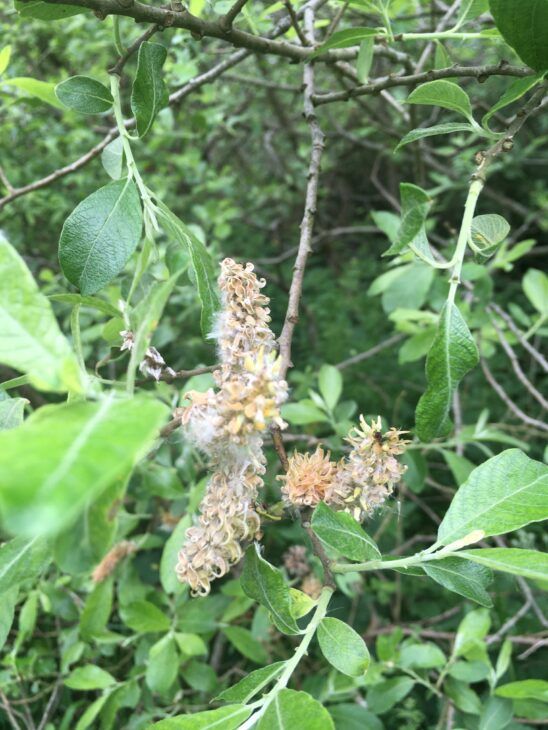It mast be a good year for willow
,

Willow catkins at seed. c. Tracy Lambert/Cumbernauld Living Landscape.
I must admit it has been a bit weird seeing snow in June in Cumbernauld. Bet that got your attention! In essence that has been what the ground has looked like this summer, all covered with willow seeds. The edges of the grass paths have looked as if they have been dusted with either a hard frost or a thin layer of snow and it has been reminiscent of winter with the seeds floating in the air looking like a light flurry.
But worry not, winter is not holding its grip. Finally warm weather has come, and we are seeing an abundance of seeds floating gently on the air as there has been little rain these last few weeks. These mast years (abundance of seed set) are amazing. If you think about it, the local or even regional synchronisation of the same plant species to produce huge amounts of seed to reduce predation pressure is a very good mechanism to have, especially after a harsh winter with little food.
This pulse occurs every few years and you may have already heard of oak or beech seed mastings. It is also a time where tree saplings will be able to set seed and grow, establishing new healthy trees for the woodland they occupy. These bursts of growth are important for woodland health. As old trees die of old age, disease, or weather damage the younger ones can take their spot and create an equilibrium of old growth, new juveniles, and deadwood.
Next time you go for a walk have a look at the ground and see if you can spot the seeds, or watch out for oak trees and see the acorns set. Can you figure from your observations how often a seed mast occurs?
